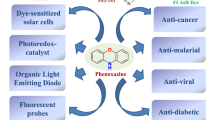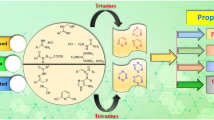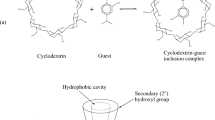No Heading
Purpose.
To study the oxidative degradation of drugs using a hydrophilic free radical initiator, 2,2′-Azobis(-amidinopropane) dihydrochloride (AAPH).
Methods.
AAPH was used as the free radical initiator to study oxidation of three model compounds (A, B, and C), which represent different oxidizable moieties. In the solution model, the drugs and AAPH were dissolved in a mixture of acetonitrile and aqueous buffer and incubated at elevated temperatures to evaluate oxidative degradation. The effects of pH and drug-AAPH ratio on the kinetics of the reaction were evaluated for compound A. Commonly used antioxidants were also evaluated by addition to solutions of drug and AAPH. In the solid-state model, blends of drug with microcrystalline cellulose were treated with AAPH and placed at elevated temperature and humidity to evaluate solid state oxidation.
Results.
Use of AAPH resulted in selective oxidation of the model drugs by a free radical initiated process. The scope of the technique was further investigated in detail using compound A. The rate of oxidation of compound A varied directly with the concentration of AAPH. The pseudo first-order rate constants for the oxidative degradation were calculated from the kinetic data. The antioxidants were rank-ordered based on their quenching activity on the rates of AAPH initiated oxidation for compound A. The concept was extended to oxidation in solid state.
Conclusions.
The proposed AAPH model is useful in assessing oxidative stability of drug candidates in development.
Similar content being viewed by others
References
1. K. C. Waterman, R. C. Adami, K. M. Alsante, J. Hong, M. S. Landis, F. Lombardo, and C. J. Roberts. Stabilization of pharmaceuticals to oxidative degradation. Pharm. Dev. Technol. 7:1–32 (2002).
2. G. Boccardi. Autoxidation of drugs: prediction of degradation impurities from results of reaction with radical chain initiators. Farmaco 49:431–435 (1994).
3. J. Hong, E. Lee, J. C. Carter, J. A. Masse, and D. A. Oksanen. Antioxidant accelerated oxidative degradation: a case study of transition metal ion catalyzed oxidation in formulation. Pharm. Dev. Tech. 9:171–179 (2004).
4. J. T. Carstensen. Drug Stability Principles and Practices, 2nd Ed., Drugs and the Pharmaceutical Sciences, Vol. 68, Marcel Dekker, New York, 1995.
5. M. Hudlicky. Oxidations in Organic Chemistry-186, American Chemical Society, Washington, DC, 1990.
6. P. Vogue. Syracuse Research Corporation’s Environmental Fate Databases. J. Chem. Inf. Comput. Sci. 36:615 (1996).
7. W. L. Jorgensen, E. R. Laird, A. J. Gushurst, J. M. Fleisher, S. A. Gothe, H. E. Helson, G. D. Pederes, and S. Sinclair. CAMEO: a program for the logical prediction of products of organic reactions. Pure Appl. Chem. 62:1921–1932 (1990).
8. P. Simon, M. Veverka, and J. Okuliar. New screening method for the determination of stability of pharamceuticals. Int. J. Pharm. 270:21–26 (2004).
9. S. B. Karki, V. Treemaneekarn, and M. J. Kaufmann. Oxidation of HMG-CoA reductase inhibitors by tert-butoxyl and 1,1-diphenyl-2-picrylhydrazyl radicals: model reactions for predicting oxidatively sensitive compounds during preformulation. J. Pharm. Sci. 89:1518–1524 (2000).
10. M. J. Kaufmann. Applications of oxygen polarography to drug stability testing and formulation development: solution-phase oxidation of hydroxymethylglutaryl coenzyme A (HMG-CoA) reductase inhibitors. Pharm. Res. 7:289–292 (1990).
11. E. Niki. Free radical initiators as source of water-or-lipid-soluble peroxy radicals. In L. Packer and A. N. Glazer (eds.), Methods in Enzymology, Vol. 186, Academic Press, New York, 1990, pp. 100–108
12. A. G. Krainev, T. D. Williams, and D. J. Bigelow. Oxygen-centered spin adducts of 5,5-dimethyl-1-pyrroline N-oxide (DMPO) and 2H-imidazole 1-oxides. J. Mag. Resonance 111:272–280 (1996).
13. Y. Sato, S. Kamo, T. Takahashi, and Y. Suzuki. Mechanism of free radical induced hemolysis of human erythrocytes: hemolysis by water soluble radical initiator. Biochem. 34:8940–8949 (1995).
14. E. G. Janzen, P. H. Krygsman, D. A. Lindsay, and D. Larry Haire. Detection of alkyl, alkoxyl, and alkylperoxyl radicals from the thermolysis of azobis(isobutylnitrile) by ESR/spin trapping. Evidence for double spin adducts from liquid-phase chromatography and mass spectroscopy. J. Am. Chem. Soc. 112:8279–8284 (1990).
15. L. R. C. Barclay, S. J. Locke, J. M. MacNeil, and J. VanKessel. Autoxidation of micelles and model membranes. Quantitative kinetic measurements can be made by using either water-soluble or lipid-soluble initiators with water-soluble or lipid-soluble chain breaking antioxidants. J. Am. Chem. Soc. 106:2479–2481 (1984).
16. R. A. Sheldon and J. K. Kochi. Metal Catalyzed Oxidations of Organic Compounds, Academic Press, New York, 1981.
17. S. W. Hovorka and C. Schoneich. Oxidative degradation of pharmaceuticals: theory, mechanisms and inhibition. J. Pharm. Sci. 90:253–267 (2001).
18. C. Schoneich, A. Aced, and K. Asmus. Halogenated peroxyl radicals as two-electron-transfer agents. Oxidation of organic sulfides to sulfoxides. J. Am. Chem. Soc. 113:375–376 (1991).
19. S. W. Hovorka, M. J. Hageman, and C. Schoneich. Oxidative degradation of a sulfonamide-containing 5,6-dihydro-4-hydroxy-2-pyrone in aqueous/organic cosolvent mixtures. Pharm. Res. 19:538–545 (2002).
Author information
Authors and Affiliations
Corresponding author
Rights and permissions
About this article
Cite this article
Betigeri, S., Thakur, A. & Raghavan, K. Use of 2,2′-Azobis(2-Amidinopropane) Dihydrochloride as a Reagent Tool for Evaluation of Oxidative Stability of Drugs. Pharm Res 22, 310–317 (2005). https://doi.org/10.1007/s11095-004-1199-x
Received:
Accepted:
Published:
Issue Date:
DOI: https://doi.org/10.1007/s11095-004-1199-x




